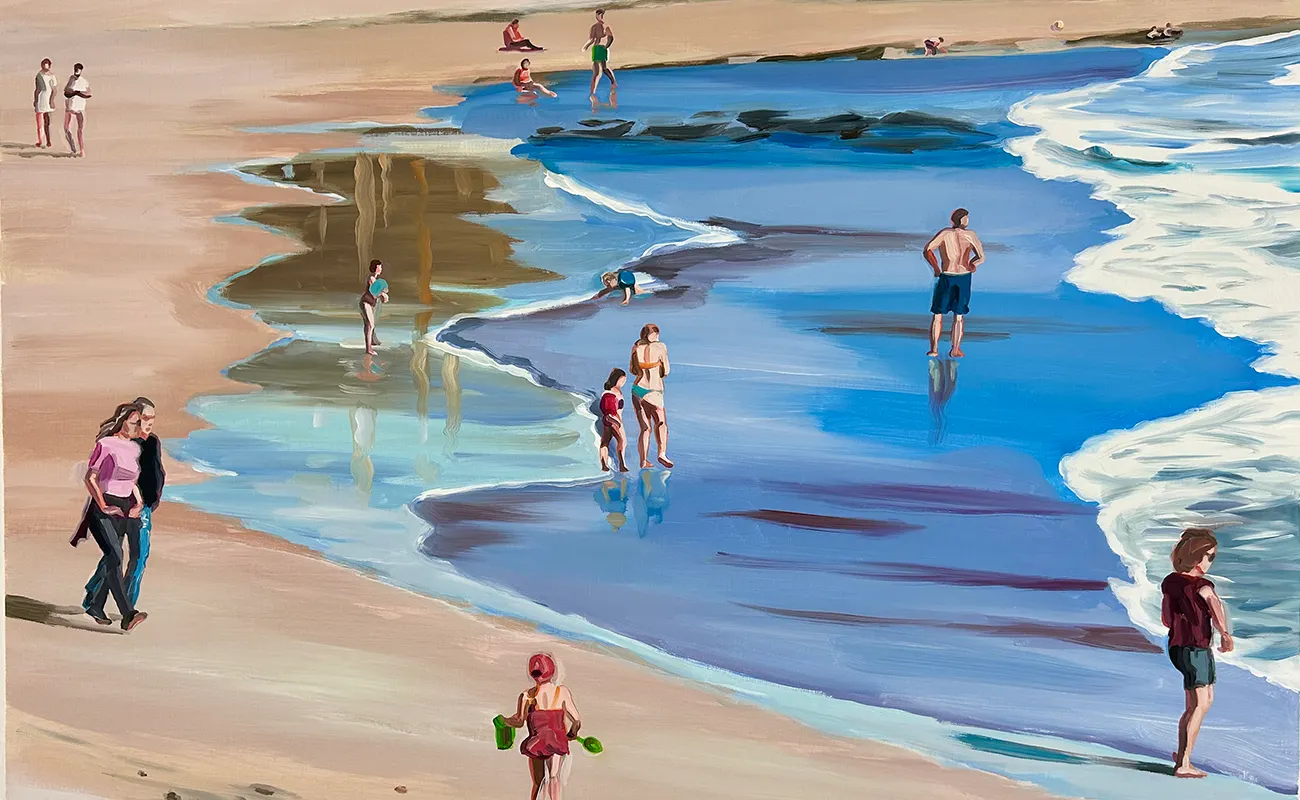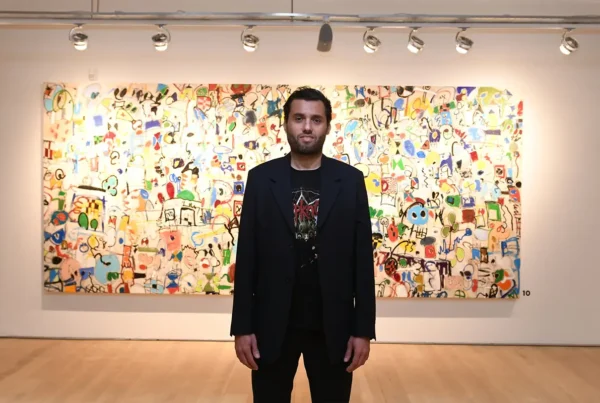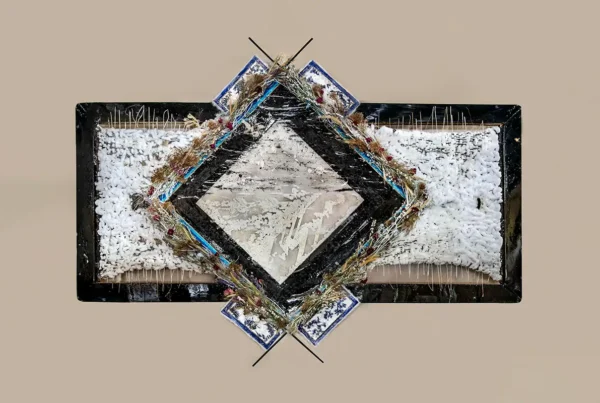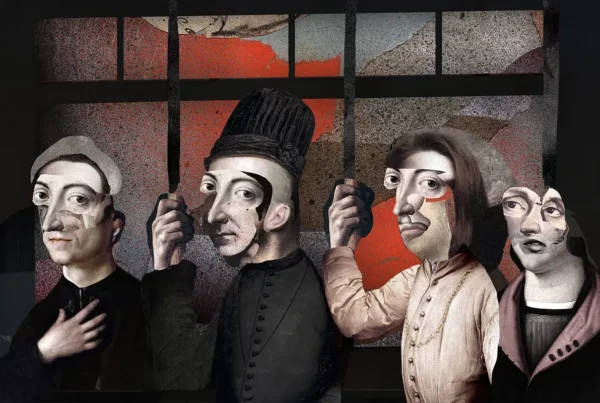“My paintings are atmospheric—somewhere between Revelation and Reminiscence.”
From Childhood Wonder to a Lifelong Passion
The vast, sunlit beaches of the Opal Coast in northern France were the setting for Cathy Doutreligne’s earliest artistic awakenings. These landscapes, where the sky and sea merged into a luminous expanse, left an indelible mark on her imagination. Childhood vacations spent along these shores instilled a fascination with light, space, and the way figures dissolved into the infinite horizon. These formative experiences would later become the foundation of her artistic vision—a vision deeply rooted in the poetic interplay between presence and absence.
Art was a natural language for Doutreligne, possibly inherited from her family. Her older brother’s studies at the Fine Arts school introduced her to a world where walls were transformed into galleries, and where she wandered through his room as if through a museum. This early exposure to artistic discourse sparked a passion that would soon consume her entirely. With an unwavering dedication, she pursued her own creative path, refining her technique and deepening her understanding of form and composition.
After completing her studies at the Fine Arts school, she faced the practical challenge of sustaining herself through her work. She applied her artistic skills to commissioned projects in press, advertising, and publishing, all while continuing her personal explorations in painting and drawing. Initially influenced by still life, she meticulously studied objects, playing with light and shadow to bring them to life. Her academic background in Realism, and even Hyperrealism, naturally led her toward a figurative approach, though her perspective would soon shift toward a more atmospheric, introspective style.
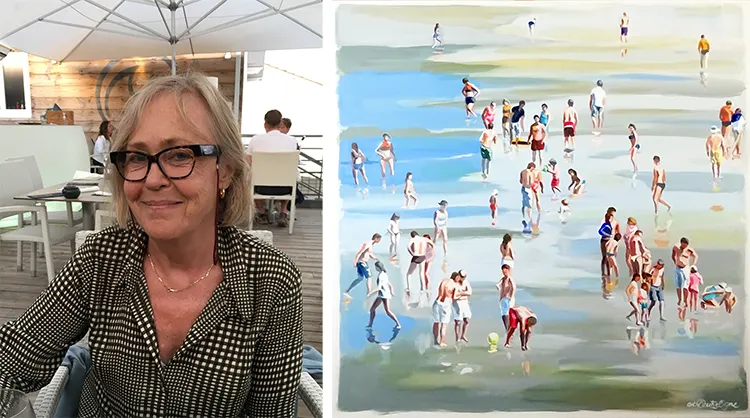
Cathy Doutreligne – Le Banc, 100 × 100 cm
Cathy Doutreligne: The Birth of Plages-Places-Plaines
The genesis of Plages-Places-Plaines can be traced back to a singular, revelatory moment on a Normandy beach in the early 2000s. As Doutreligne stood at the water’s edge, she observed how the uniform light had seemingly erased the physical contours of the landscape. The familiar geography dissolved, leaving behind only an ethereal expanse where time and space merged. In this suspended reality, the silhouettes of beachgoers emerged as the only visual anchors, punctuating the void with their fleeting presence. This experience became a catalyst for a new artistic direction—one that sought to explore the role of the individual within an undefined, timeless environment.
This series represented a stark departure from her previous still-life paintings, which had been meticulously composed of collected objects arranged under dramatic lighting. Where those works emphasized accumulation and detail, Plages-Places-Plaines embraced dispersion and minimalism. The beach became a conceptual stage, a neutral zone where human figures existed not as individuals with distinct identities but as collective elements within a broader visual harmony. Doutreligne’s focus shifted from the tangible and immediate to the distant and abstract, fostering a sense of detachment that invited introspection.
Central to this exploration was the idea of dual perception—how a single figure could stand independently yet also dissolve into the surrounding environment. Her paintings strive for balance between presence and absence, evoking an atmosphere that is both nostalgic and timeless. The figures, though distinct, are rendered without personal narratives, reinforcing an almost dreamlike universality. Through this approach, Doutreligne captures a poetic paradox: the simultaneous solitude and interconnectedness of human existence within the vastness of nature.
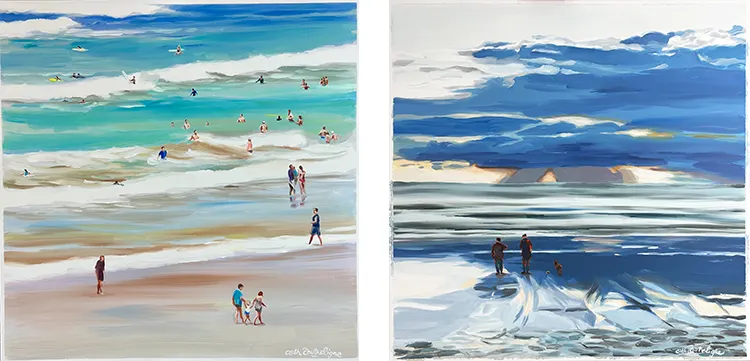
La Houle, 100 × 100 cm – Aube Nautique, 100 × 100 cm
Light, Movement, and the Search for Distance
Doutreligne’s fascination with light defines her artistic approach. Sometimes it dissolves the scene into near-abstraction, while at other times it crisply sculpts waves and figures with striking clarity. Her fluid brushstrokes and precise yet expressive technique reveal a delicate balance between figuration and abstraction. Though her background in realism is evident in her ability to render forms with accuracy, she deliberately embraces an openness in composition, allowing each painting to breathe with movement and spontaneity.
Her interest in capturing ephemeral moments extends beyond the canvas. She spends summers on the beaches that inspire her, observing, sketching, and photographing the ever-changing interactions between people and space. These studies become the foundation for her paintings, which she reworks and reimagines in her Paris studio. Though she lives far from the coast, the rhythms of the sea remain ever-present in her work. Her process is immersive—standing before her easel, she loses herself in the act of painting, transported by the interplay of light and color.
A distinct signature of her work is the white-bordered framing of her compositions, reminiscent of Polaroid photographs. This choice reinforces the idea of capturing fleeting instants, distilling the vastness of experience into an image that feels both spontaneous and carefully constructed. The figures she paints—bathers, walkers, children at play—are not meant to dominate the scene but rather to punctuate it, their presence animating the space without imposing a fixed narrative. This openness allows viewers to bring their own memories and emotions into the work, making each painting a shared experience rather than a singular statement.
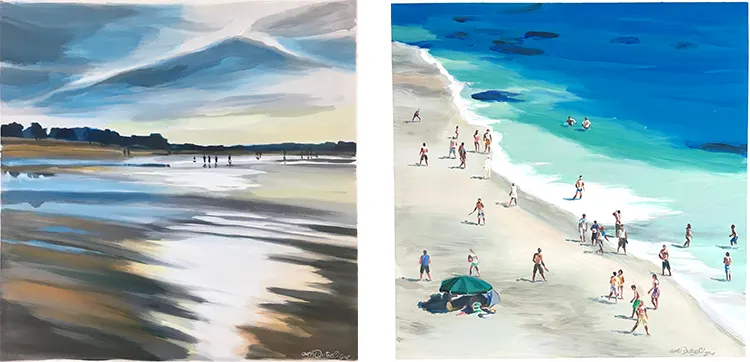
Sunset, 100 × 100 cm – Comme un Lagon, 80 × 80 cm
Cathy Doutreligne: Between Abstraction and Figuration
Doutreligne’s artistic influences span a wide range, from the luminous impressionism of Joaquín Sorolla to the expressive minimalism of Cy Twombly and the quiet poetry of Giorgio Morandi’s compositions. Her admiration for abstraction coexists with her love for figuration, and her work embodies this duality—structured yet fluid, specific yet universal. She is drawn to art that surprises her, often gravitating toward styles far removed from her own, finding inspiration in the unexpected.
Her fascination with imagery extends beyond painting. A lover of cinema and literature, she is deeply engaged with visual storytelling in all its forms. As a child, she was captivated by the illustrations of Belgian artist Marcel Marlier, spending hours absorbing the delicate renderings of light and detail. Though her artistic references have evolved, her appreciation for works that embrace both emptiness and fullness remains constant. Morandi’s watercolors, for instance, intrigue her as much for their negative space as for their softly defined shapes.
Painting is not merely a profession for Doutreligne—it is a way of measuring time, a daily practice that anchors her existence. Nearly every day, she stands before her easel, illuminated by the glow of daylight lamps, surrendering to the immersive act of creation. Each brushstroke is an attempt to capture the impermanence of light, the shifting relationships between figures and space, the rhythm of existence itself. And while her paintings already invite viewers into these suspended moments, she dreams of one day seeing them collected in a book—a tangible reflection of a lifetime spent chasing the fleeting beauty of time.
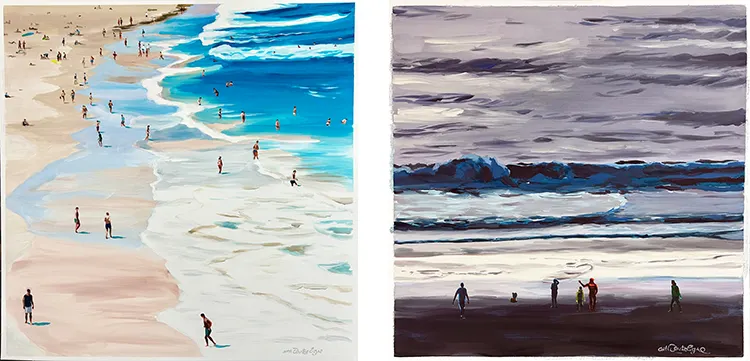
Langues Salées, 100 × 100 cm – La Grandeur, 80 × 80 cm


